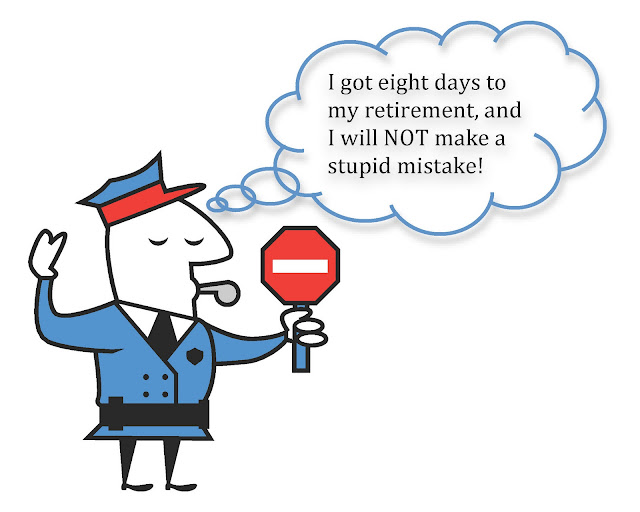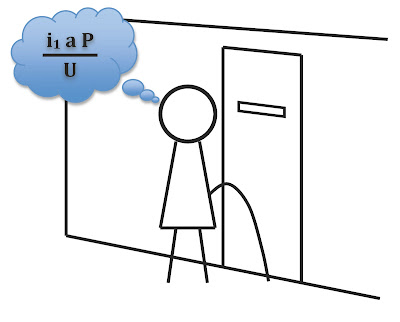So, our next scientific Egypt Week post concerns a paper just published in last week’s issue of Nature, where the authors describe novel behavioral effects of the imprinted gene Grb10 in the mouse.
If you’re not familiar, genomic imprinting is the phenomenon where the expression pattern of a gene depends on its parental origin. So, most of your genes come in two copies, one of which came from your mom, and one of which came from your dad. For most genes, the function of the allele, or gene copy, depends just on its DNA sequence. But something like 1% of our genes are imprinted, meaning that they retain a chemical memory of which parent they came from, so that the two gene copies will function differently, even if the DNA sequences are identical.
The most widely accepted theory for the evolutionary origin of gene expression suggests that it is the result of an intragenomic conflict between maternally and paternally inherited gene copies. That is, from a gene’s-eye point of view, natural selection acts differently on maternally and paternally derived alleles.
Many imprinted genes in mammals have growth effects in early development, and these most of these effects are well described by models where selection favors more growth (and a greater demand on maternal resources) when alleles are paternally derived, and less growth (preserving more maternal resources for the mother’s other offspring) when maternally derived.
There is also evidence for large-scale imprinted gene expression in the brain, and evidence that these imprinted genes may have substantial effects on cognition and behavior. We are still at the early stages of describing these effects, and at even earlier stages of understanding the relevant evolutionary pressures.
Elsewhere on this blog, I have begun writing a series of primers on genomic imprinting, links to which can be found here, if you are interested in more background.
Today’s paper describes the effects of the two parental knockouts of the Grb10 gene. Grb10 is a particularly interesting imprinted gene, because it is maternally expressed in many peripheral tissues, but paternally expressed in the central nervous system. So, when you knock out the maternally inherited copy, you get a complete loss of function in the periphery, but don’t impact Grb10 expression in the brain. Conversely, when you knock out the paternally inherited copy, you lose gene function in the brain, but leave expression in the periphery unaffected.
The phenotype of the maternal knockout is more or less what is expected in terms of growth effects, and is consistent with previous studies of this gene. Theory predicts that if a growth-related imprinted gene is maternally expressed, it likely functions as a suppressor of growth. When the maternal copy of Grb10 was knocked out, the result was overgrowth, due to the loss of this growth-suppressing function.
The knockout of the paternally inherited results in a behavioral phenotype associated with increased social dominance, as indicated by two specific behaviors. The first dominance behavior was observed in a “tube test.” In this test, two mice who don’t know each other are forced to encounter each other in a tube. In this setting, the knockout mice are less likely to back down than the wild-type (normal) mice are.
The second observation was an increase in allogrooming and barbering. Let’s pause for a moment to talk about what that means. Allogrooming is where one individual grooms another individual (in contrast to autogrooming, where you groom yourself). Barbering is where the grooming gets out of hand, and the groomee gets big bald (and sometimes bruised and bloody) patches.
Now, intuitively, you might assume that grooming behavior is submissive, like the handmaid combing out the princess’s hair. In mice, at least, it’s not like that. If you have a pet mouse, and it is grooming you, it is actually being dominant. It’s more like when you sit your little sister down in a chair and put makeup on her – the goal is NOT to make her look good. And, if you are feeling really mean, you give her a haircut, too.
The researchers argue that the behavioral effect is specific to social dominance, as tests designed to look at anxiety, locomotion (moving), olfaction (smelling), and aggression all found no differences between these knockouts and wild-type (normal) mice.
A conflict-based interpretation of these behavioral results would suggest that, for some reason, maternally inherited genes place a greater premium on establishing social dominance than do paternally inherited genes. (In the nervous system, the gene is paternally expressed, and knocking it out increased dominance behaviors. This implies that the gene normally acts to limit dominance behaviors.)
 |
| A bemedallioned Hosni Mubarak helps to illustrate the intragenomic conflict over social dominance behaviors. Natural selection favors alleles that enhance socially dominant behaviors when they are maternally derived, but limit socially dominant behaviors when paternally derived. The study was performed in mice, and it is important to note that the patterns of imprinted gene expression can vary among species, so we can not extrapolate from these results to the influence of Grb10 on human cognition and behavior. However, mice and rats are closely related, so we are probably safe extrapolating to Mubarak. |
The next question is why would alleles favor more socially dominant behaviors when maternally derived? Fundamentally, at this point we have no idea. This is where the modeling has to come in. In this type of situation it is always possible to come up with a host of possible explanations, all of which sound plausible, and all of which would predict that a paternally expressed gene would limit dominance. The key thing is to model each of those explanations formally, so that we know what key ecological and demographic factors underlie the explanation. Then, we find other species where those factors differ, and examine the imprinting status and phenotypic effect of Grb10 in those species.
 |
| For the less politically oriented, the intragenomic conflict over social dominance is like this. Nadya “Octomom” Suleman is like your maternally inherited genome, while the guy with the moustache and the milk bottle is like your paternally inherited genome. Image from the Daily Mail. |
Peace be upon you.
Garfield AS, Cowley M, Smith FM, Moorwood K, Stewart-Cox JE, Gilroy K, Baker S, Xia J, Dalley JW, Hurst LD, Wilkinson LS, Isles AR, & Ward A (2011). Distinct physiological and behavioural functions for parental alleles of imprinted Grb10. Nature, 469 (7331), 534-8 PMID: 21270893 [1]
––––––––––––––––––––––––––––––––––––––––––––––––––––––
[1] Disclosure: I didn’t really intend for Egypt Week to devolve into blog-posts-about-papers-by-collaborators-of-mine week, but there you have it. I have an ongoing collaboration with Anthony Isles, and know some of the other authors.









